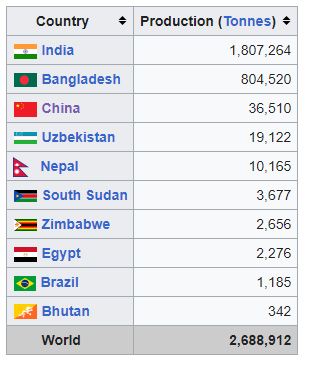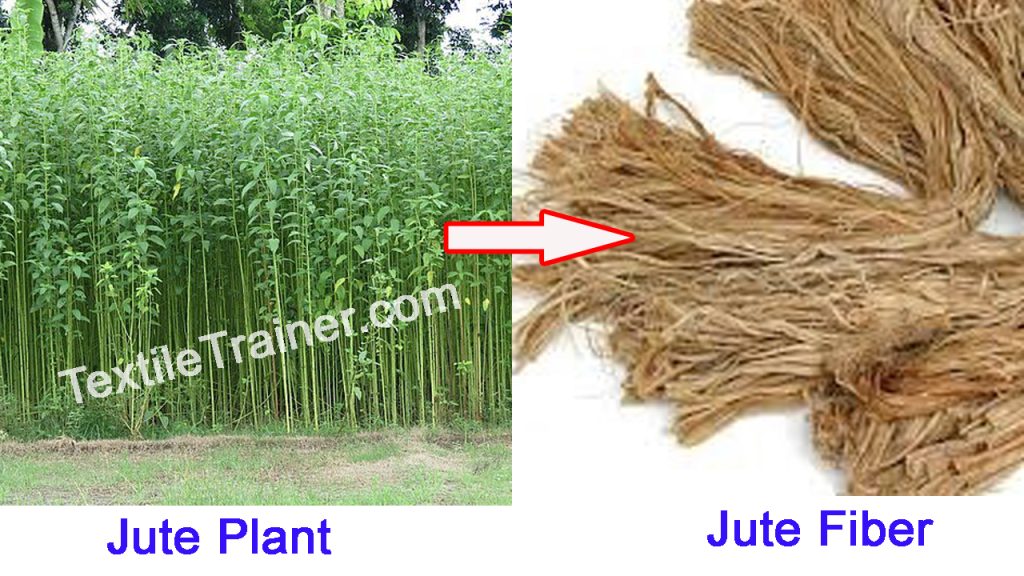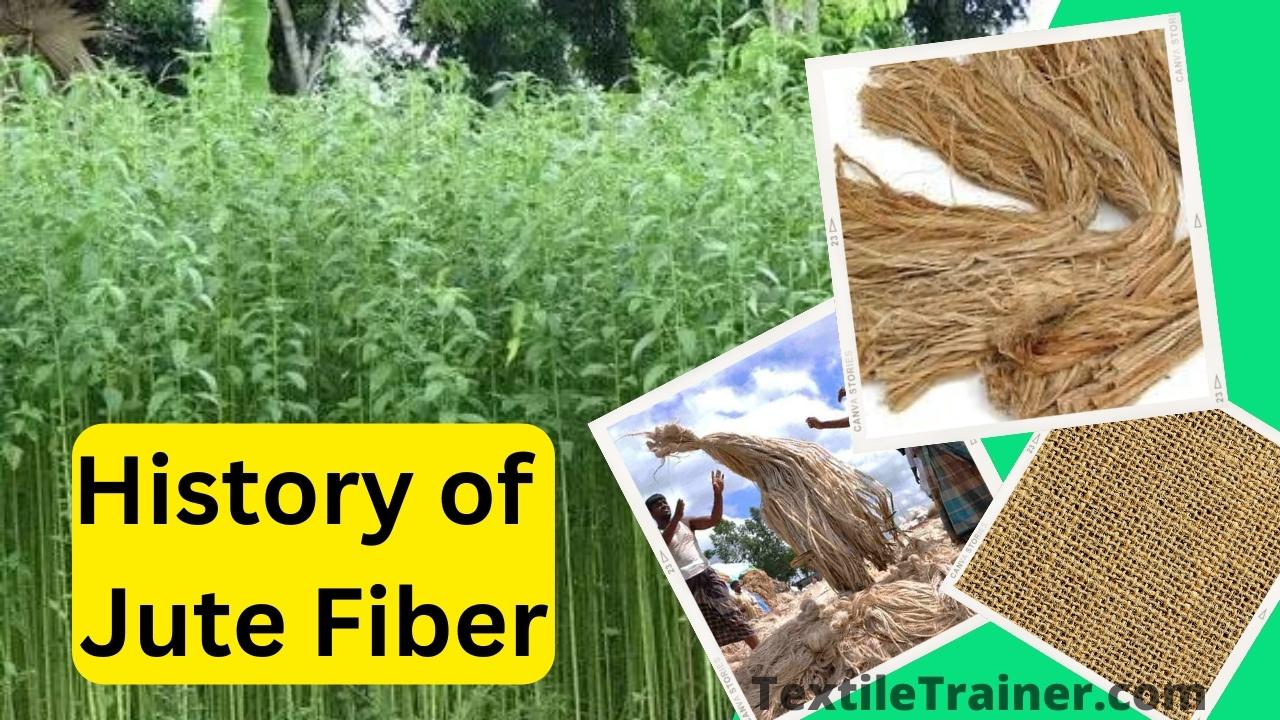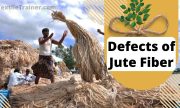Introduction:
As a natural, versatile material with a rich history of jute fiber, jute fiber is derived from the inner bark of the jute plant. Its long, soft, and shiny strands offer a distinctive aesthetic appeal with their golden brown to off-white color. Tropical regions like Bangladesh, India, and China cultivate this coarse fiber because of its high durability and tensile strength. After harvesting, the jute stalks are carefully processed to extract the fibers, which are washed, dried, and sorted according to length and quality. As a result of jute fiber, sacks, bags, and ropes are produced, while textiles, carpets, and handicrafts are also created. Furthermore, jute’s eco-friendly qualities make it an environmentally friendly choice, as it is biodegradable, renewable, and has a minimal environmental impact. Due to its strength, versatility, and ecologically conscience attributes, jute fiber continues to gain recognition as the world embraces sustainable alternatives.
In the world of natural fibers, jute fiber holds a significant place. It is a versatile material with outstanding qualities. Long, lustrous strands display hues ranging from golden brown to off-white, giving jute products a distinctive appearance. In addition to its strength and durability, it is an attractive choice for various industries due to its durability. As a tropical crop, jute is mainly grown in Bangladesh, India, and China. From harvest to extraction, jute stalks are carefully soaked and stripped to reveal their valuable fibers. The fibers are then meticulously cleaned, dried, and sorted according to their quality and length, ensuring optimal usability. Jute fiber can be applied to a wide range of products, encompassing a wide variety of industries. In addition to producing sturdy sacks, bags, and ropes for packaging and transportation, jute is used to create textiles, carpets, and exquisite handicrafts. Jute fiber’s increasing popularity is also due to its eco-friendliness. As a renewable and biodegradable material, it offers a sustainable alternative to synthetic fibers, aligning with a global movement toward environmental awareness. Among today’s fiber choices, jute fiber stands out for its natural beauty, strength, and eco-consciousness. Jute fiber also know as golden fiber. golden
As of 2020, the following ten countries are the largest producers of jute in terms of metric tons.

History of Jute Fiber:
As a natural fiber, jute has been used for centuries in a variety of cultures for a variety of reasons. Here is a brief history of how and why jute has been used over the centuries:
Ancient period of jute fiber:
It is said that poor villagers of India used to wear jute clothing during the era of the great Mughal emperor Akbar. The Bengali Indians continue to use white jute for making ropes and twines, which they have used for various household applications since ancient times. It is also worth mentioning that Chinese papermakers have traditionally made paper from various plants such as jute, hemp, and cotton.
The period from the 17th century:
The British East India Company, the first jute trader in the world, was delegated authority over the British Empire from the 17th century until the middle of the 20th century. By using this company, raw jute was traded all over the world. The first jute mill in India was established by Margaret Donnelly during the turn of the 20th century when she was a jute mill landowner in Dundee. In 1793, the East India Company exported the first consignment of Jute from India. A group of flax spinners from Scotland was trying to determine whether it would be possible to process jute mechanically in the country. As early as 1830, Dundee spinners have been able to decide on the method of spinning the Jute yarn by transfiguring their power-driven flax machinery into power-driven Jute machinery. The result of this is an increase in the export and production of raw jute from the Indian subcontinent, which is the world’s leading supplier of raw jute.

The period from the year 1855:
It is important to note that most jute growing areas are located on the Kolkata side of Bengal. In 1855, when Mr. George Acland was buying jute spinning machinery from Dundee to India, the first power-driven weaving factory was established at Rishra near Calcutta on the River Hooghly near the town of Rishra. By the time 1869 came around, there were five mills with about 950 looms in the industry. There was such rapid growth in the textile industry that by 1910, 38 companies were running more than 30,685 looms, producing more than a billion yards of cloth and more than 450 million bags. As early as the middle of the 1880s, the jute industry had absorbed almost all of Dundee and Calcutta into its domain. After the beginning of the 19th century, the manufacture of jute began to spread to other countries such as France, America, Italy, Austria, Russia, Belgium, and Germany, which continued until the end of the century.
The period from the 19th century till 1947:
It has been observed that the jute industry has grown tremendously in the 19th century, particularly in terms of production. During the year 1939, there were roughly 68,377 looms set up on the River Hooghly near Calcutta. In addition to coarse bagging materials, jute is also known as hessian, produced from finer fabrics known as burlap or hessian. As a result of the establishment of handlooms in Calcutta, this place holds a leadership position in the world of burlap and other bagging materials.
The Time after the year 1947:
During this period, most of the Jute barons began to leave India after getting independence, leaving the setting up of jute mills. After partitioning, most of them were seized by Marwaris business people in 1947. As soon as East Pakistan was partitioned, it had the most extensive stock of jute available to them. The tensions between India and Pakistan had already begun. Now Pakistani people felt they needed the jute industry to thrive. As a result of this, many Pakistani families have ventured into the jute business and established many mills in Narayanganj over the years. The Pakistani families were generally Bawanis, Adamjees, Ispahanis, and Dauds. It was in 1971 that Bangladesh was liberated from Pakistan, so most of the jute mills were taken over by the Bangladesh government. Later, the government built a company called BJMC (Bangladesh Jute Mills Corporation) to control and manage the jute mills in Bangladesh.
The jute industry played a vital role in the economic development of Bengal. At the beginning of the twentieth century, Bengal could only boast one manufacturing industry – jute. About half of the total industrial workforce of Bengal was employed by this industry. Nearly one-third of all Bengal exports were derived from jute manufacturers. This represented a significant percentage of Bengal’s total export trade in 1900-1.
For most of the history of the jute industry, three-quarters of the laborers in jute factories were found to be non-Bengalis. Bengalis occupied mainly intermediate positions in this industry, while most of the raw jute used in the industry came from Eastern Bengal.
A few years before the establishment of the first jute mill in 1855, handloom weavers used jute fiber to make twines, ropes, and coarse fabrics for people experiencing poverty and for fishing and mooring vessels in the industry’s early days.
During this period, the British also discovered a way to soften jute fiber’s hard and brittle nature by soaking it in oil and water. This softened the fiber and made it easier to separate, producing threads that were useful for many purposes.
A number of historical events contributed to the development of the jute industry. For example, in 1838, the Dutch government required bags for transporting coffee from the East Indies to be made of jute rather than flax. During the Crimean War of 1854-56, however, the supply of flax from Russia was cut off, forcing Dundee, the famous jute manufacturing center in the UK, to seek alternative supplies.
On the other hand, the American Civil War (1861-65) provided further impetus to the development of the jute trade, as the supply of American cotton was greatly restricted. Since then, the industry has yet to return to flax or cotton as its main source of raw materials.
There has been a rapid increase in the demand for jute over the past few years, leading the Bengali peasants to respond quickly and increase the area under cultivation of jute to meet the global demand.
George Auckland, an Englishman, established the first jute mill in the region due to the easy availability of power. However, he was unable to make a reasonable profit from the business and left it. A second mill with spinning and weaving facilities was constructed in 1859 by the Borneo Company, and unlike its predecessor, it flourished after its establishment. Within five years, the mill was able to double its output.
During the period between 1868 and 1873, these mills prospered. As a result, five new companies were founded in 1874 and eight more in 1875, which led to a considerable boom in Bengal’s jute industry as the nineteenth century came to an end.
After establishing jute mills, Bengal became one of the largest exporters of sacking bags. Due to the fact that Calcutta was a strong competitor of Dundee in hessian goods, it was able to penetrate the market for hessian goods in many parts of the world, including America, primarily because Calcutta had a cost advantage in producing jute goods.
The second reason was that it was close to the jute-growing districts of Western Bengal and Assam. The third reason was that it was a cheap place to live. The fourth reason was that the mills ran for 15 to 16 hours, sometimes even 22 hours daily. This caused Calcutta manufacturers to have a financial and physical advantage.
Furthermore, they were capable of offering a finer grade of jute. It has been estimated that over the period of sixty years between 1880 and 1940, the number of mills increased by five times, the number of looms by about fourteen times, the number of spindles by 19 times, and the number of people employed by eleven times. In the period between 1900 and 1920, the growth of the industry was considerable.
According to the statistics compiled in 1872, the ratio of jute cultivation to total cropped land in these districts was 14%, 11%, 9%, 7%, 6%, and 5%, respectively. After that, jute cultivation spread to other districts as well. In 1914, in terms of the above ratio, Rangpur (28%), Bogra (25%), Tipperary (Comilla, 24%), Pabna (21%), Dhaka (18%), Faridpur (16%), Hughli (West Bengal, 13%), Rajshahi (11%), Jessore (10%), Nadia (10%), and Dinajpur (7%) were the districts leading in the above ratio.
The world demand for raw jute decreased after the end of World War I in 1918. As a consequence, there was a reduction in the area under jute cultivation. The situation deteriorated during the Great Depression from 1929 to 1933 when the prices for jute sank so low that jute cultivation was no longer profitable. Because of this, peasants significantly reduced the area under jute cultivation. By 1939, economic recovery began. There was an increase in demand for jute as a result of the Second World War, and between 1939 and 1945, peasants planted more areas under jute cultivation due to the increase in demand.
During the period of independence of Bangladesh in 1971, the public jute industry in East Pakistan became the property of Bangladesh due to its location in East Pakistan. The Pakistani mill owners (roughly 68% of the total loom strength) left the country, leaving the jute industry in disarray. Abandoned jute mills were looted heavily. The new Bangladeshi government had to take it on in rebuilding the industry.
The number of jute mills under BJMC increased to 78 at one point. As a result of the lack of financial institutions immediately after liberation, it became very difficult to solve the problem of economic hardship in the jute industry. Short supply of spares, labor unrest, wastage in production, etc., shook the industry severely.
Due to this, the jute industry in Bangladesh underwent a period of reorganization within the first two years of liberation. The government gave the industry a cash subsidy of Tk 200 million annually. Bangladesh maintained its position as the largest exporter of jute goods in the dollar market due to this policy and periodic devaluation of the currency.
In December 1979, BJMC had 77 jute mills, two carpet backing mills, and two spare parts manufacturing units. By June 1981, BJMC had 74 mills under its administration, employing about 165,000 workers and 27,000 office staff.
After the denationalization of jute mills began in July 1982, settling the valuation process and other organizational issues associated with the handover took a long time. The jute mills owned by BJMC had a satisfactory performance in 1982-83 when they made about Tk 240 million before contributing to the national exchequer.
The same mills incurred total losses of about Tk 430 million in the previous year. Jute mills suffered losses for years, and external donor agencies pressed hard for denationalization. BJMC had 33 mills in 1999. By working closely with the government, the World Bank continued to restructure the jute sector, primarily through denationalization, mergers, dissolutions, closures, and new units.
In addition to being a renewable natural fiber, jute is biodegradable and environmentally friendly. It is one of the few crops that grow in the monsoon season, rotating with rice to improve soil fertility. Deforestation is prevented by using jute sticks as fuel and fencing material as a substitute for wood because jute leaves enrich the soil and have an excellent nutritional value as vegetables. As a result, jute remains a good investment with the increased global concern for the environment.
In the past several decades, the jute industry has been the lifeblood of our rural economy, and it continues to be one of the mainstays of rural economies today. There are roughly 15 million farmers who grow this cash crop, and several more, perhaps an equal number, are involved in processing, transporting, and converting it. It is important to examine the history of the jute industry and the events that occurred over the past few decades to understand its current state.
Conclusion:
Jute fiber has played a significant role in Bangladesh’s economy, industry, and cultural heritage throughout history. From its colonial-era origins to its present-day prominence as the world’s largest producer and exporter of jute, Bangladesh has embraced its versatility and eco-friendly properties. The jute industry has significantly shaped Bangladesh’s identity. Over the years, the country has focused on value-added goods and sustainable practices while adapting and diversifying its jute products. As Bangladesh’s commitment to sustainable development grows, so does its demand for eco-friendly materials, highlighting the importance of jute fiber. Jute remains an essential part of Bangladesh’s economic landscape and a symbol of its resilience, innovation, and sustainability commitment.
References:
- Belal, P. D. (2009). Understanding Textiles for a Merchandiser . Dhaka: L. B Graphics and Printing.
- Corbman, D. P. (1983). Textiles Fiber to Fabric. NewYork: Mary McGarry.
- Kadolph, S. J. (2006). Textiles. New Delhi: Dorling Kindersley India Pvt. Ltd.
- Siddique, D. H. (n.d.). Natutal Fibers. Dhaka: Hafiz Book Center.
- https://asiajute. com/







1 thought on “From Ancient Origins to Global Trade: Tracing the Fascinating History of Jute Fiber”